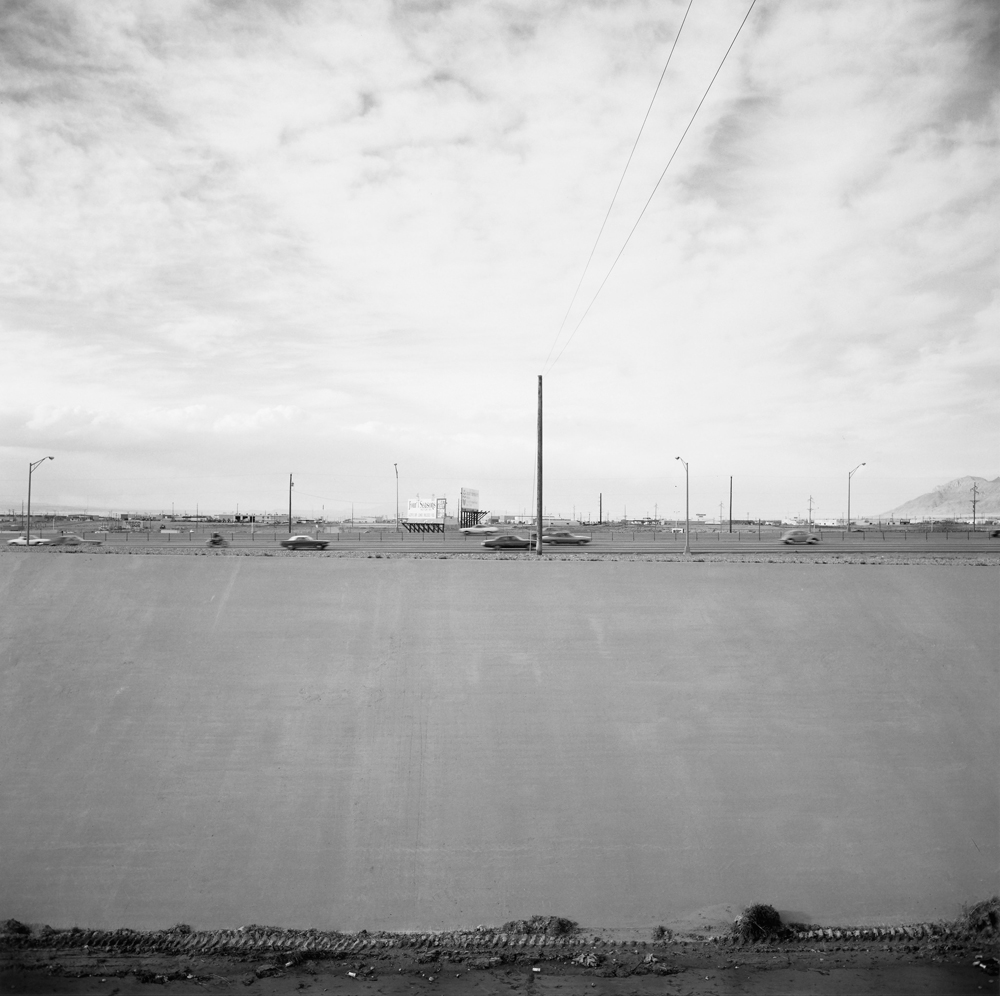As one of the ten photographers of the landmark “New Topographics” exhibition of 1975, Frank Gohlke is immediately concerned with capturing the seemingly mundane in the environment. Breaking from photographers like Ansel Adams, who was preoccupied with capturing painterly scenes of sublime beauty representing his vision of the West, many of the “New Topographics” photographers were interested in the rapidly changing face of the region. Photographs like this represent a new conception of the American West, forever changed by vast human alterations of the environment. This photograph does not simply capture a landscape changed by human construction, but presents a view that would likely be unattainable—and perhaps even undesirable for residents of or visitors to Albuquerque. While many of the “New Topographics” photographers, including Gohlke, make otherwise mundane vistas visible solely through photography, Landscape, Albuquerque, New Mexico makes this device particularly clear by showing a highway from a strikingly unusual perspective. Not only are we used to seeing a highway from the comfort of our car, but photographs of a seemingly endless highway snaking to the horizon of a desert have become a cliché image of the American West. Gohlke as subverted not only our expectations of landscapes and highways but broader cultural imaginings of the West as well. While apparently depersonalized and seemingly a-political, the photographer has made use of his own invisibility and consciously created a work of art that renders this disruptive landscape visible.
-Jacob Edwards
‹ Return to Exhibition | Learn more about Frank Gohlke ›
